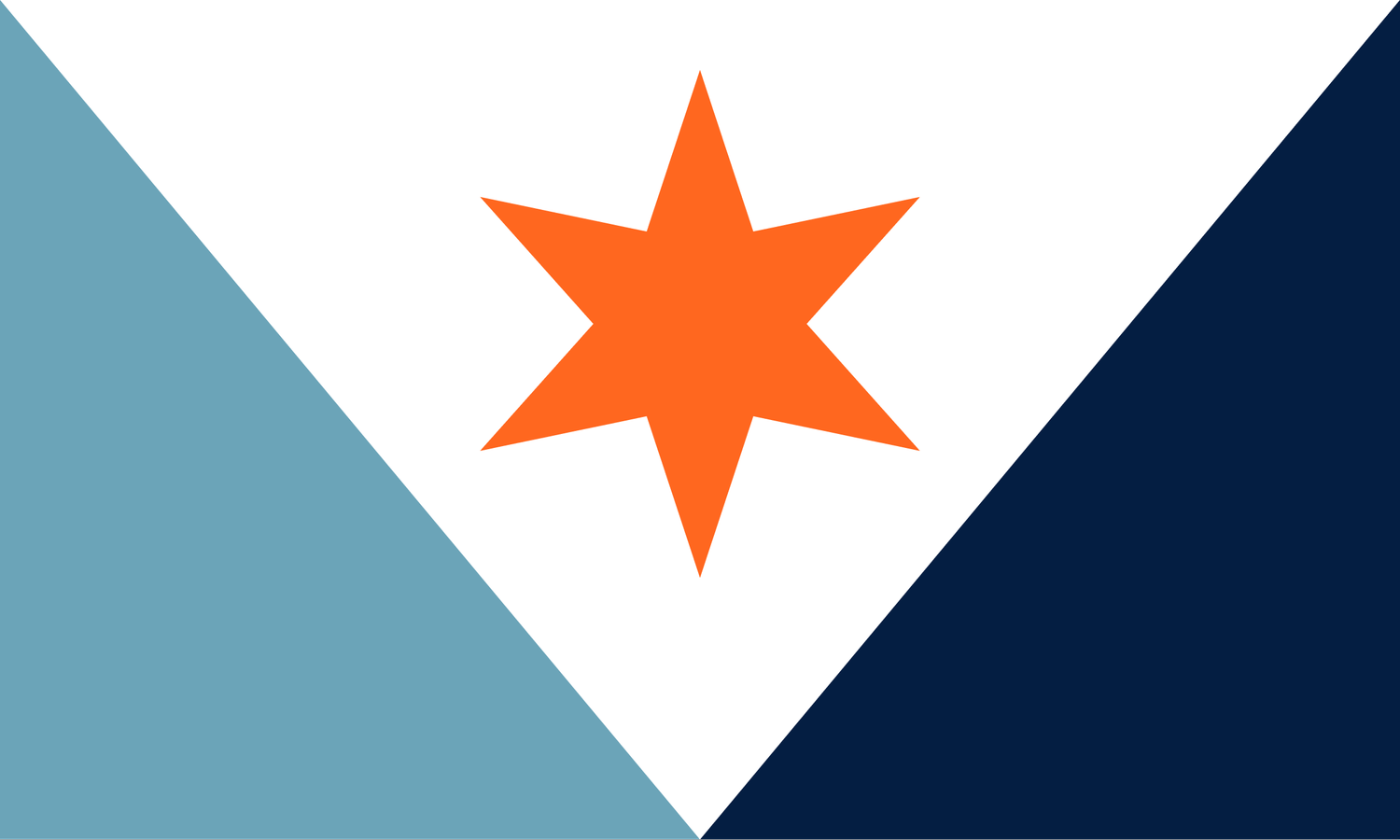Everything in its Place
Follow along step-by-step to construct the First Light flag for yourself
Every piece that makes up First Light has been meticulously designed, sized, and placed. Follow the flag construction rules to successfully reproduce the flag for your own purposes.
1. Choose your aspect ratio
The flag can be displayed in three aspect ratios:
1:2. The width is 2x as long as its height.
3:5. The width is 1.66x as long as its height.
2:3. The width is 1.5x as long as its height.
2. Place the triangles
Both triangles must be right triangles.
The hoist-side triangle forms a 90° angle in the bottom-left corner of the flag. Its hypotenuse extends from the upper-left corner to the midpoint of the bottom edge.
The fly-end triangle forms a 90° angle in the bottom-right corner of the flag. Its hypotenuse extends from the upper-right corner to the midpoint of the bottom edge.
The angles opposite of the vertical legs of both right triangles must meet precisely at the midpoint of the bottom edge.
The acute angles of the right triangles will differ depending on the aspect ratio used.
3. Build the star
The star must have six points.
・The six points consist of six identical acute triangles whose vertices open toward the center of the star at 37°.
4. Place and scale the star
Star in 1:2 aspect ratio
The star’s vertical placement is determined by stacking 11 identically sized stars vertically, point to point on the midline, and identifying the 5th star from the top as the “source star.”
The star must be scaled proportionally from the center of the “source star” at +7.0x.
The star must be center-aligned on the x-axis.
Star in 3:5 aspect ratio
The star’s vertical placement is determined by stacking 9 identically sized stars vertically, point to point on the midline, and identifying the 4th star from the top as the “source star.”
The star must be scaled proportionally from the center of the “source star” at +5.4x.
The star must be center-aligned on the x-axis.
Star in 2:3 aspect ratio
The star’s vertical placement is determined by stacking 4 identically sized stars vertically, point to point on the midline, and identifying the 2nd star from the top as the “source star.”
The star must be scaled proportionally from the center of the “source star” at +2.3x.
The star must be center-aligned on the x-axis.
5. Apply the colors
The four colors of the “First Light” flag are Orange, White, Azure Blue, and Navy Blue.
The star must be “Orange” as specified below.
The field must be “White” as specified below.
The hoist-side triangle must be “Azure Blue" as specified below.
The fly-end triangle must be “Navy Blue" as specified below.
In most cases, on-screen or digital reproductions of the flag should use the RGB colors as in the table below. When displaying in physical fabric formats, it is much preferred to use the Pantone specifications. When printing on paper, the CMYK colors are superior.
Extending the bottom edge
During creative explorations you may find yourself wanting to extend the bottom edge of the flag beyond it’s standard bounds. When doing so, you will be presented with a challenge in figuring out how to render that extended area.
The rule to follow is simple: The navy blue must always be extended diagonally in such a way that it overlaps the azure blue.
Another way to think of it: Imagine the flag is wearing a robe. The navy blue side of the robe on the flag’s left side (the observer’s right side) must overlap the azure blue side of the robe on the flag’s right (the observer’s left).
This must always be the case.


